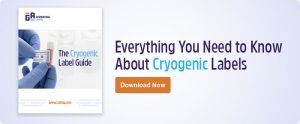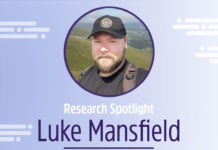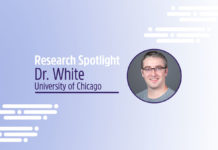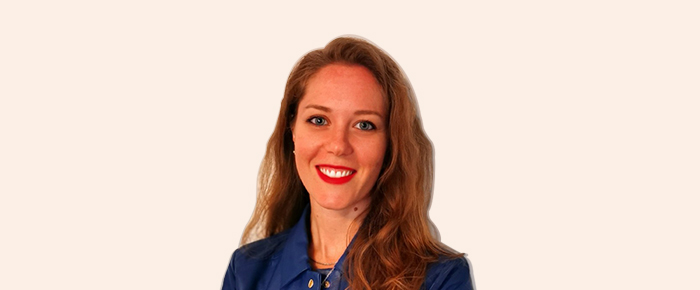 This week, our Research Spotlight focuses on Dr. Francesca Cappellini, a post-doctoral researcher at the University of Milan, supported by a fellowship by Fondazione Umberto Veronesi. She studies how lifestyle can affect disease prevention, particularly how nutrigenomics and natural small molecules can affect health and the onset of disease.
This week, our Research Spotlight focuses on Dr. Francesca Cappellini, a post-doctoral researcher at the University of Milan, supported by a fellowship by Fondazione Umberto Veronesi. She studies how lifestyle can affect disease prevention, particularly how nutrigenomics and natural small molecules can affect health and the onset of disease.
Anthocyanins to reduce cancer risk
At the start of 2020, Dr. Cappellini was set to study the effects of a class of naturally occurring small molecules, anthocyanins, on cancer cells. She was going to study purple corn extract, which contains a high concentration of anthocyanins, giving the corn its purple color. According to Dr. Cappellini, she was all ready to start when the COVID-19 pandemic hit:
“Unfortunately, this project started in January and I had to pause the experiments in March due to COVID-19. I was at a very preliminary stage where I was going to screen signaling molecules involved in cancer progression, inflammatory factors like NF-κβ, COX2, and iNOS, and the MAPK-AP1 cell transformation pathway. I was also going to look at proteins involved in adhesion and extracellular matrix degradation, like E-cadherin, Integrinβ1, β-catenin, MMP2, and MMP9. I’m eventually planning on assessing the role of NF-kβ and AP1 in MMP2 and MMP9 regulation.”
When explaining to me the basis for using anthocyanins as preventative agents for cancer, Dr. Cappellini stressed that there’s already work that supports her own hypotheses, but that testing on humans might be a long way off. “Many studies, in vitro and in vivo, show that anthocyanins can play a role in reducing the growth, size, and metastatic potential of many cancer types, including breast and lung. However, when exploring the effects of anthocyanins in humans, we encounter several problems. One is that we haven’t yet determined the level of intake necessary to effectively protect humans from cancer, and the concentrations used in vitro are difficult to achieve in humans.
Another problem is the stability of these molecules; they are subjected to oxidation and other degradation processes that might affect their efficacy, which can affect their bioavailability. Moreover, anthocyanins need to work together with other components in order to provide a full effect. This means that a single anthocyanin alone is less effective compared with a mixture of anthocyanins, flavonoids, and nonflavonoid phytochemicals. For these reasons, the effects we see in human studies are not as obvious as in vivo or in vitro studies.”
Fighting cancer with magnetic nanoparticles
Previous to her post-doctoral fellow position, Dr. Cappellini studied magnetic nanoparticles. She attempted to use a specific set of nanoparticles to kill cancer cells by inducing H2O2 production. “We wanted to create a system composed of iron magnetic nanoparticles conjugated with the enzyme DAAO (D-amino acid oxidase). The idea was to deliver this nanozyme system into the tumor through an external magnetic field. The DAAO enzyme converts D-aminoacid into imino acid, producing H2O2 as a side product. Since we don’t have d-amino acids in our body, we can activate the enzyme selectively by giving the substrate.”
Unfortunately for Dr. Cappellini, she wasn’t able to translate her findings in vivo due to the limitations of using certain nanoparticles in the body. “This system had several drawbacks, the worst of which was that the nanoparticles themselves tended to aggregate, so while the idea was valid, its application was difficult.”
Immediately after her Ph.D., she focused instead on nanoparticle toxicity to develop better methods of testing particles for use in pre-clinical and clinical research. “Nanoparticle toxicity is quite a sensitive topic. The more scientists studied it, the more they realized that they couldn’t draw general rules on their toxicity. It depends on how the particles are produced, how they are suspended, in which medium they are used, and their oxidation status. All this makes it quite difficult to organize these particles into groups to predict their toxicity.”
Her research into nanoparticles led to a publication in the journal Nanotoxocology that showed that toxicity depends on a variety of properties of both the nanoparticle and its medium. “I studied three forms of metallic cobalt and showed that their reactivity depends on the corrosion and transformation/dissolution properties of the particles, which affected their toxicity as well. We found that ions can play a big role in their toxicity as well as the medium we tested them in.”
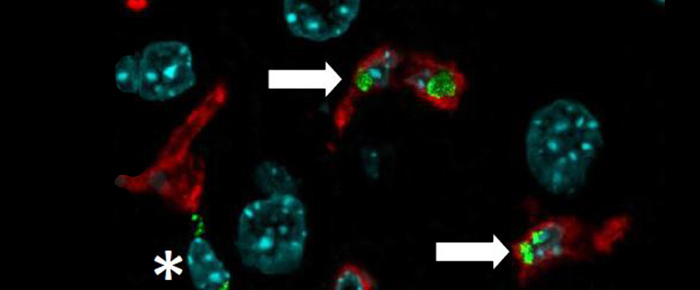
The view from Italy during lockdown
Just as the COVID-19 pandemic hit, Dr. Cappellini was slated to finish up a project of hers illustrating that anthocyanins can protect cardiac cells from apoptosis and damage induced by doxorubicin, a commonly used chemotherapeutic agent. She noted that, in her study, anthocyanins had increased cell viability and reduced DNA damage of these cells by targeting AMPK, FGF21, and p53 as well as inhibiting the interaction between doxorubicin and topoisomerase 2b.
“The virus couldn’t have hit at a worse moment. On the one hand, we were concluding the final experiment of my old project, those final touches that can make the story a bit more complete. In research, a story is never over, and I would have loved to finish some more detail. On the other hand, I was starting a new project, which also requires a lot of work. We were receiving new cell lines, setting up the experiments and the dosages, and the virus came. In the beginning, I tried to reduce my workload, but by the 8th of March, the lockdown began and the entire department closed. I kept working from home to finalize my paper but the practical work is on hold.”
I asked Dr. Cappellini what it must have been like during such a stressful time, particularly since Italy was one of the first countries to implement a full lockdown in response to a massive surge in cases. “We knew the situation was changing, so I think all of us reduced our workload in the weeks before, but the complete lockdown forced us to immediately end all our experiments. This meant throwing away those experiments that were halfway completed, clearing the cell incubators, freezing everything possible, halting animal experiments, guaranteeing the safety of animals, and caring for plants as well.”
Eventually, Dr. Cappellini was cut off completely from the lab, with only six authorized personnel allowed to access the building. Anyone else who needed to access the building had to gain authorization from the department. ”To go anywhere outside your home, you needed a certificate saying why we had to exit our home. You were only allowed out for work, health problems, or food. If your motivations weren’t deemed valid, you were subjected to a penalty of 500 euro.”
“The virus couldn’t have hit at a worse moment.”
A career in science communication
I initially came into contact with Dr. Cappellini because of her penchant for posting interesting content to the social media platform, LinkedIn. Her posts are often insightful and draw in a large audience willing to discuss scientific topics at length (she’s even gone as far as writing a blog for us about COVID-19 immunity). During our interview, I asked what her motivation was for engaging so much in scientific communication, to which she mentioned that it all started working at the Fondazione Umberto Veronesi.
“When I started working for the Fondazione, one of my tasks was science communication and education. It’s very important for a non-profit organization to show their work and the value they provide, so I started organizing meetings in schools and participating in dissemination events. It was then that I discovered how much I like communication. I always knew I liked teaching and explaining science to the general public, but I never thought that communication could be part of my job. Growing as a scientist, I now realize the importance of providing correct information to the public to counteract fake news.”
When asked about what fake news she was talking about, her immediate response was vaccinations. “A few years ago, in Italy, we had a big problem with the anti-vaxx movement. The movement was widespread, and the number of childhood vaccinations had dropped. It was a confirmation of how important it is for scientists to get closer to the public and gain people’s trust.”
Dr. Cappellini has since become a lot more active in the scientific community, on social media and by publishing her own science blog. She stressed that scientists need to get closer to the public to regain their trust and credibility. “We need to find an effective way to communicate our discoveries and to be transparent with our findings. COVID-19 highlights the problems in science communication; everyone was more interested in popularity rather than education. We need to find a worldwide agreement on what to communicate and how. Moreover, we need to be more explicit in stating what is known and proven by scientific fact versus what we hypothesize. In the future, I see myself switching into science communication 100%—I don’t know when, but I believe my future is there.”
LabTAG by GA International is a leading manufacturer of high-performance specialty labels and a supplier of identification solutions used in research and medical labs as well as healthcare institutions.

